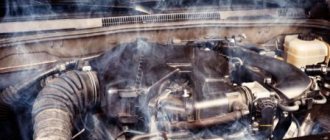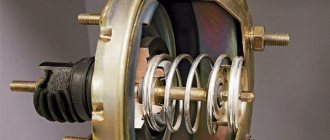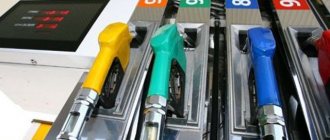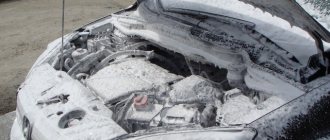Fault finding algorithm.
Step 1 - search for a non-functioning cylinder.
The troubleshooting algorithm is very simple - warm up the engine to operating temperature and, at idle, remove the wires from the spark plugs one by one, as in this video:
If the engine speed decreases, you have removed the wire from the slave cylinder, if the engine performance does not change, the cylinder is not working. ZMZ 402 remains operational on 2 cylinders!
When the engine fails, there are only two reasons - there is nothing to burn in the idle cylinder, or there is nothing to set it on fire, hence the further troubleshooting algorithm.
Step 2 - check the ignition.
The spark on the spark plug ignites the combustible mixture. We consistently check the spark on the wire (just keep it 3-5 mm from the engine)
If the spark does not jump, the cause of the tripping is found to be high-voltage wires or the distributor cover.
If the spark jumps, remove the spark plug.
If it is wet and smells of gasoline, the spark plug is most likely faulty, but it can only be checked in a special pressure chamber. Personally, I have never seen this camera, and I always checked the spark plugs with a banal replacement, fortunately the price of a set of A14 spark plugs does not exceed 200 rubles.
If after replacing the spark plug the engine runs smoother, it makes sense to replace the remaining spark plugs (they usually fail at the same time).
This indicates an air leak.
Step 3 - looking for air leaks.
The easiest way to find air leaks is to use a cigarette, bring it to the intake manifold and observe the smoke (the mechanical cooling fan can be unscrewed during the test, but no more than 3 minutes of operation without it is permissible). If cigarette smoke does not show air leaks, try clamping the VUT hose:
If the engine runs smoother when you pinch the hose, the problem is either in the hose or in the brake booster.
Favorite places for air leaks on the 402 engine:
- Cracked VUT (vacuum brake booster) hose
- Gasket failure under the intake manifold
- VUT membrane failure
Once I encountered an engine tripping due to deformation of the carburetor frame, but there the engine was more likely to double!
If everything is done consistently, then there will be no difficulties in identifying the malfunction due to which the ZMZ 402 is tripping.
If you have anything to add to the article or have any questions, please write comments.
Source
Why the engine jerks during acceleration: the main reasons
Let's start with the fact that most of the reasons why such deviations occur in the operation of internal combustion engines are often associated with the following systems:
- engine power system;
- internal combustion engine ignition system;
The culprit may be either the carburetor itself (dirty jets, incorrect settings, etc.) or the fuel pump. At the same time, we should not exclude the possibility that excess air is being sucked in somewhere, which causes the carburetor engine to jerk when accelerating the car.
As for modern injection engines, a number of common problems will be similar to engines with a carburetor. At the same time, problems that are unique to units with injection injection are also added to the list. Let's focus on the possible causes of dips and jerks.
- First of all, let's start with the ignition system. As a rule, if problems arise in this system, there is a loss of power and the unit consumes more fuel. Usually spark plugs, high-voltage armored wires, and ignition coils fail. We also note that on injection cars the problem may lie in a faulty camshaft position sensor (CPR).
If no breakdown is detected, you should unscrew the spark plugs and inspect them. The electrodes must be intact, excessive carbon deposits are not allowed, the insulator must not have cracks, etc. Checks may also require armored wires. In some cases, after replacing the spark plugs and spark plug wires, the engine stops jerking during intense acceleration.
Why does the 402 engine run intermittently at low speeds?
The other day it started stalling at idle, and it works intermittently if the gas is turned to the floor. (this is if the engine is warmed up) and starts very poorly. On a cold engine it starts perfectly with half a turn. there are no failures. what could it be? the valves may have burnt out (145,000 mileage) recently I sometimes drove on a fresh gas (80+105 (aviation) gasoline) cleaned the distributor, spark plugs (there was black carbon deposits :eek:) does the 402 engine have an idle speed sensor on the K151 carburetor? By the way, I also poured an additive to clean the carburetor. how to remove the carburetor?)
Hello! Well, since there is black carbon deposits, then one of the reasons is that the carb is overflowing. Yes, and the signs look similar. Or the mixture is too rich. Did you do anything to the carb? I treated it by removing the top carb cap and adjusting the fuel level in the float chamber. Yes, it happened quite recently: the needle stuck to the petal that extends from the float - so there were serious problems with the normal operation of the engine. I took it apart, unstuck it, put it back - it worked like clockwork.
Yes, and to solve this whole issue it is not necessary to remove the entire carb. But if you really want to, then disconnect all the cables and rods, and unscrew the 2 nuts that secure the carb to the engine. It seems so











